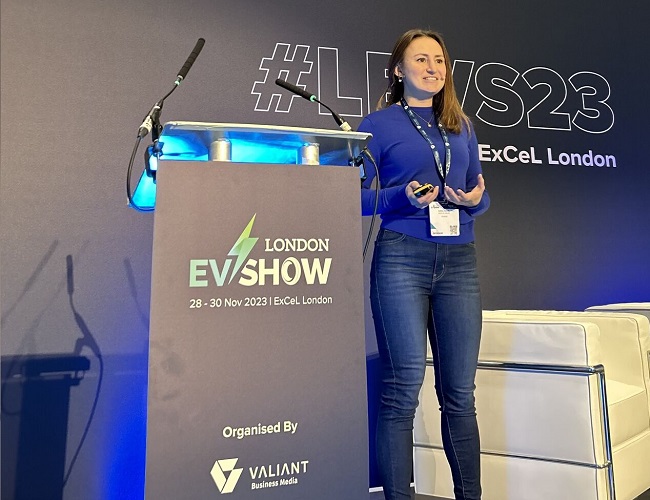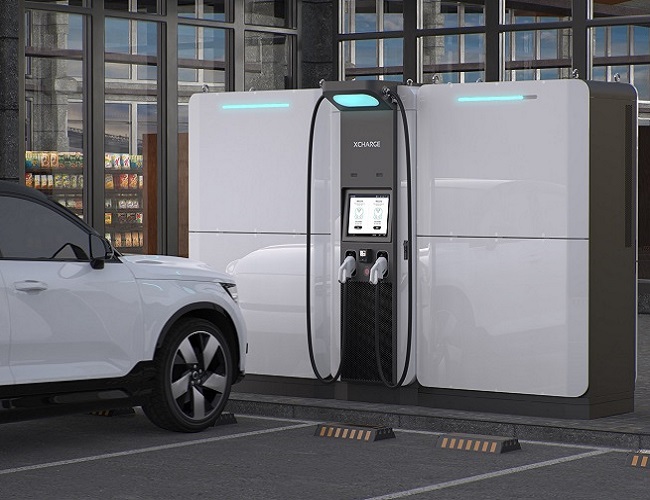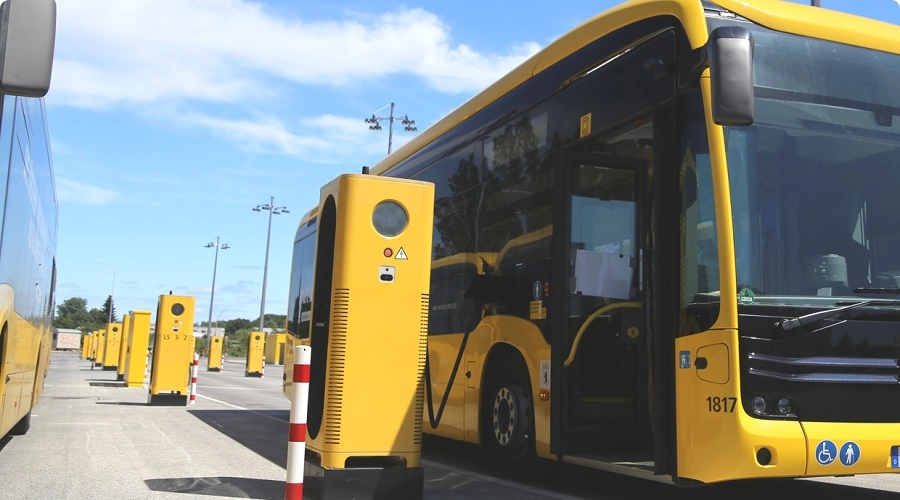XCharge, the manufacturer of flexible DC chargers, is actively involved in various initiatives across Europe.

“In the far north, this month, we are launching our first project in Sweden at a bus depot,” reveals Anna Björkman, Sales Manager Northern & Eastern Europe at XCharge, in conversation with Mobility Portal Europe.
“The UK is another northern market where we have ongoing initiatives since 2022 and expansion plans. We are establishing new partnerships,” she adds.
It’s worth mentioning that, in order to expand its projects, representatives from the company participated in the London EV Show held at the end of November.
During the event, Albina Iljasov, Director of Europe at XCharge, presented how technologies combining DC charging with battery storage, such as the Net Zero Series, can help reduce costs and stabilize the grid while providing fast charging.
Christoph Ebersdorfer, Regional Sales Manager D-A-CH; Michaël Quilbeuf, Business Development Manager; and Valentina Fernández Vergara, Marketing Intern, also attended.
From the company’s booth, they introduced the Net Zero Series product line.


These units combine DC charging with integrated energy storage, offering up to 210 kW, even in locations with limited grid capacity.
“We are a global company that focuses on having a local presence where we operate,” explains Björkman.
“This is important because both product and service requirements can differ across borders, even if the physical distance is not great,” she adds.
What challenges arise when installing chargers in the north?
Extreme temperatures are common in all northern countries.
“The season for outdoor installations is generally different from that in Southern Europe. The farther north you go, the longer the ground will be frozen during winter, preventing any installation work,” explains the Sales Manager.
Additionally, other technical considerations must be taken into account. For example, whether the touchscreens of the equipment will withstand freezing temperatures for an extended period.
“It is also necessary to consider whether the fans can minimize the amount of cold air entering the station and if there will be any unnecessary power derating based on usage time rather than actual temperatures,” she adds.
Will the Northern European countries achieve the objectives set by AFIR?
The text of the Alternative Fuels Infrastructure Regulation (AFIR) establishes specific deployment targets that must be met by 2025 or 2030.
For instance, it stipulates that from 2025, it will be necessary to install fast-charging stations of at least 150 kW for cars and vans every 60 km along the main corridors of the Trans-European Transport Network (TEN-T).
Stations for heavy-duty vehicles with a minimum power of 350 kW must also be placed every 60 km along the main TEN-T network and every 100 km in the comprehensive TEN-T network starting from 2025, with complete network coverage by 2030.
When asked about the possibility of meeting these objectives by the Northern European countries, Björkman comments that, “in general,” they should be able to achieve them.
“This region has a relatively large installation base, and there is also interest from both the public and private sectors to expand electromobility,” she explains.
“The easiest target to meet is probably delivering the required amount of kW for public charging corresponding to the number of electric vehicles in the country,” she adds.
It is worth mentioning that AFIR has the advantage of being flexible regarding the technology used. Therefore, it is possible to meet this target with technology that suits the local market needs, which are still very different across Northern Europe.
“It might be more challenging to meet the requirements for fast charging along the TEN-T network, especially in the most rural areas,” declares Björkman.
“Installing fast charging can be expensive, and the return on investment is easier to achieve closer to cities, as more people are charging, and installation and maintenance are more easily accessible,” she clarifies.
Read more: eMobility debate: What are the industry leaders’ perspectives on the AFIR?
The role of woman in eMobility
While an increasing number of women are joining electromobility, the reality is that there are still relatively few compared to men in the sector.
Nevertheless, Björkman believes that “the overall industry attitude is progressive and encourages diversity.”
“In my case, perhaps I would have joined earlier if technical subjects and their impact had been more actively introduced when choosing what to study and what path to take after graduation,” she notes.
“Having said that, you do not necessarily need a technical background to start working in electromobility,” she adds.
At XCharge, the gender balance is quite equal, even at the management level.
Read more: Kasia Sobótka: Companies Disregarding Women to Face “Detrimental Effects on Business”







